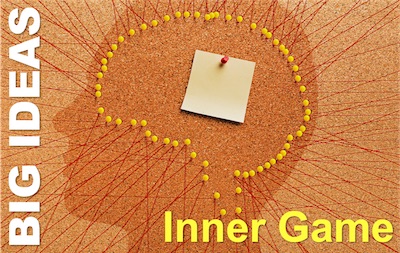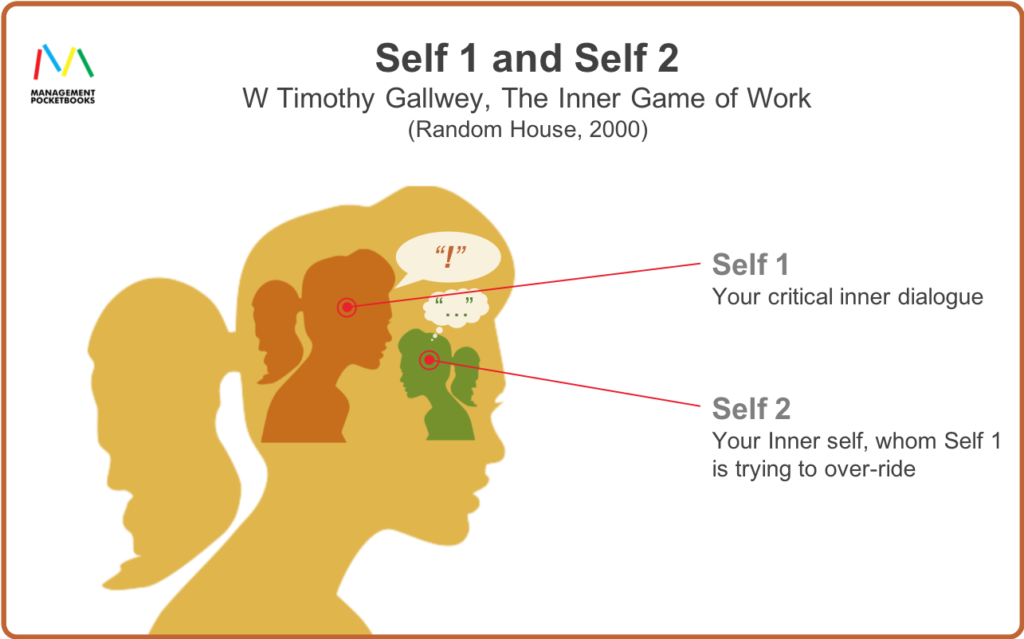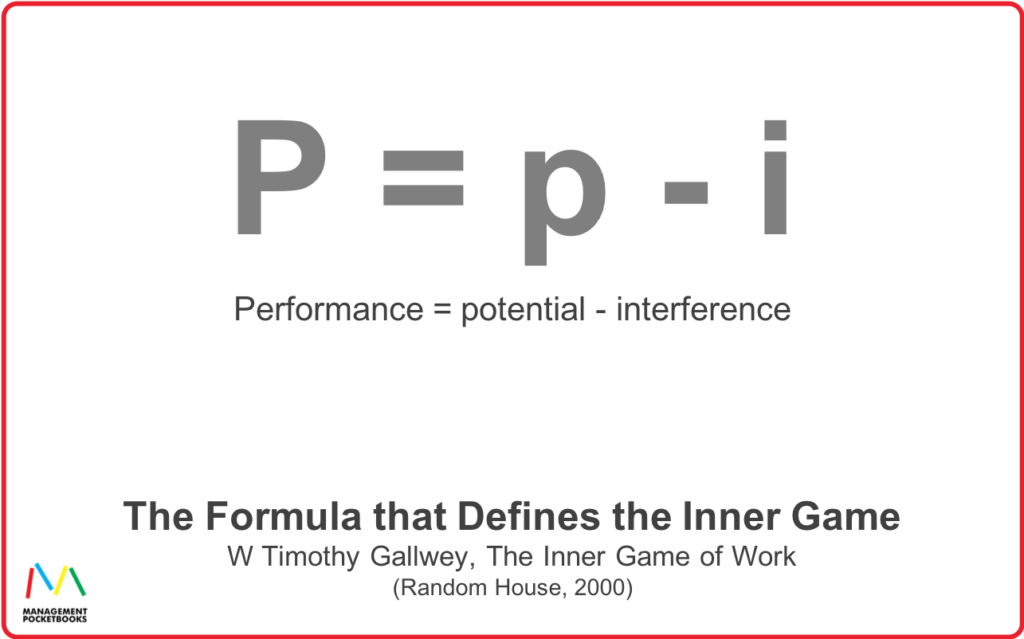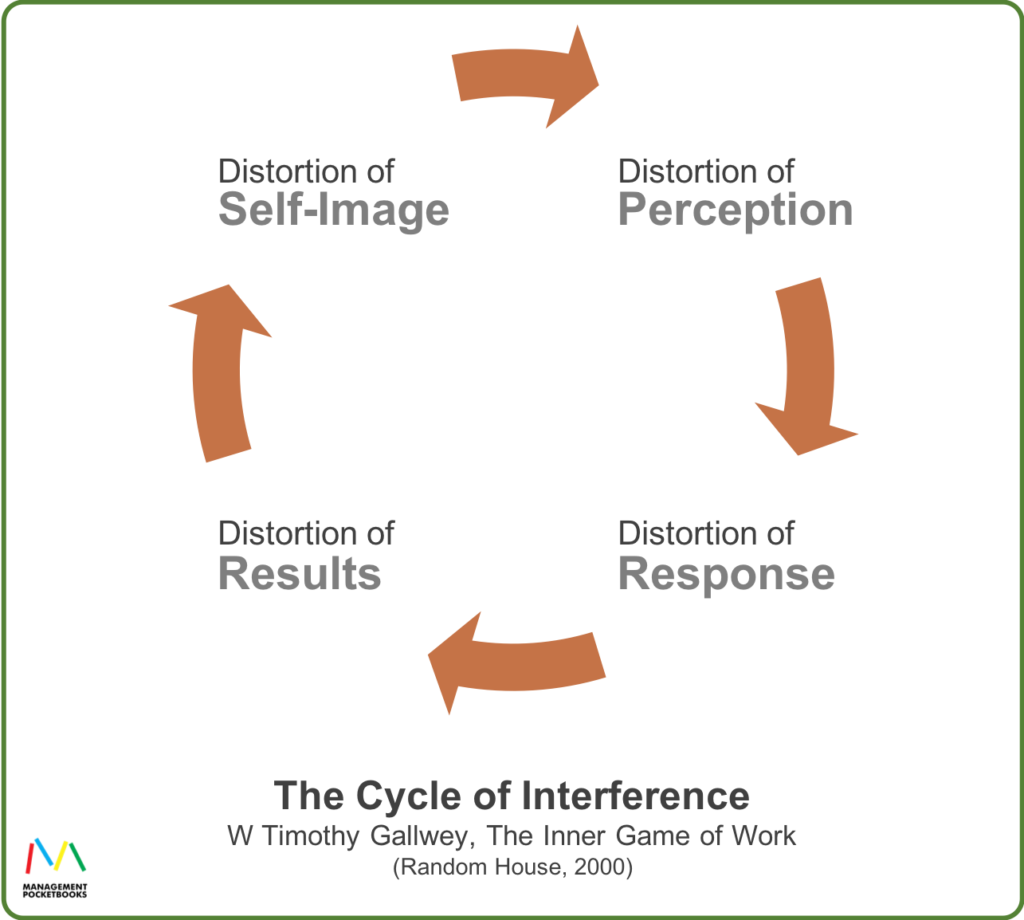

What are you really capable of? And what holds you back from achieving it? Competing against your own mental obstacles is the ‘Inner Game’.
Although many people in the world of work have never heard of the Inner Game, nor of Timothy Gallwey, its founder, this big idea has been extremely influential.
Because Gallwey and the ideas behind the Inner Game are very much the immediate progenitors of modern performance coaching. It it is hard to over-estimate the impact that has had on management and organisational life.
Why the Inner Game?
The origins of the inner game lie in sports coaching. Timothy Gallwey played and coached sport in the early 1970s. To this day, most of the people who have heard of the term ‘inner game’ first encountered it through Gallwey’s books, ‘The Inner Game of Tennis’ (US|UK) and ‘The Inner Game of Golf’ (US|UK), which sold in huge numbers.
Gallwey hit on the idea (Badum tissh) of inner game when he realised that a large part of excellent sports performance was related to the need to deal with the voice in your head, sabotaging your confidence. Yet when you stop trying too hard and trust your capabilities, you perform at your best.
He described the competing parts of yourself as Self 1 (the critical voice) and Self 2 (your inner confidence).
Here’s an illustration…

What is the Inner Game?
So, the Inner Game is that competition between Self 1 and Self 2.
- Self 1 is analytical, cautious, aware of your failings, and critical of every tiny error. It contains your fears and frustrations, and likes to point out every weakness. It acts to restrain your freedoms. In the language of US sports, it is Self 1 that is responsible when we ‘choke’.
- Self 2 is intuitive and optimistic, keen to try anything, and happy to take things as they come. In children, Self 2 has a loud voice but, by the time we become adults, it is too often drowned out by the louder Self 1. Using the language of US sports, it is Self 2 that is responsible for excellent, or ‘clutch’ performance.
In another formulation of the idea, Gallwey offers us a simple equation. Our performance never meets its potential because it is hampered by interference from Self 1. He presents that like this:

The Cycle of Interference
A third way of thinking about this helps us to see where this interference comes from. Gallwey calls this ‘the cycle of interference’. He illustrates it like this…

How to Play the Inner Game and Overcome the Cycle of Interference
I’m no golfer, and neither do I play tennis. So my understanding of Gallwey’s ideas comes from three sources:
- I was trained in performance coaching by Sir John Whitmore, who started his coaching career as an Inner Game coach, and developed his thinking from there. The GROW model owes a lot to the inner game.
- I had the privilege to meet Tim Gallwey at a small group seminar, hosted by the Managing Partner of the firm I once worked for. He gave a short seminar, and joined us for dinner.
- I keep my memory of his ideas fresh with his book ‘The Inner Game of Work’ (US|UK) which applies his ideas to our domain. I really do not think this book has received the attention it deserves. Every manager, executive, and professional should read and re-read this book.
The Three Steps
In The Inner Game of Work, Gallwey describes the three steps we need to take to play the inner game and combat the cycle of interference.
- Non-judgemental Awareness is Curative
We need to prioritise ‘noticing’. Noticing what is going on around us, and letting the data infuse our unconscious and conscious minds. Whatever we want to achieve or do better, we need to hone our perceptions around what is happening and how every change we make to what we are doing influences the outcome. - Trust Self 2
First up, you need to put yourself – Self 1, that is – out of the way. Let your innermost confidence take control and still that annoying voice that will inevitably heighten your awareness of your failings and of the risks, and cause you to choke. - Leave learning choices to the learner
If you want to learn (or teach), you need to let the learner (yourself, maybe) learn from their awareness of of how their performance results from what they do. Don’t impose rules or prescriptions on the people you are teaching. The way you do it may work for you, but not so much for them. And, if you are learning yourself, trust your own judgements at least as much as the prescriptions of experts. Test everything in the real world, and be open to the data that you need, to refine your performance.
What is Your experience of the Inner Game?
We’d love to hear your experiences, ideas, and questions. Please leave them in the comments below.
To learn more…
Management Pocketbooks has a large collection of books on coaching, many of which are among the very best (IMHO) of the collection:
- The Coaching Pocketbook is full of tips and techniques on how to coach others to achieve outstanding performance.
- The Advanced Coaching Pocketbook is full of tips, techniques, and tools to advance your coaching skills and promote a more confident and reflective approach.
- The Team Coaching Pocketbook is full of tips, techniques, and tools to harness the collective capability of teams and boost performance.
- The Cognitive Behavioural Coaching Pocketbook is full of tips, techniques, and tools to enable coaches, L&D specialists, and managers to facilitate transformational change.
But I cannot forget to recommend, once again, ‘The Inner Game of Work’ (US|UK).
